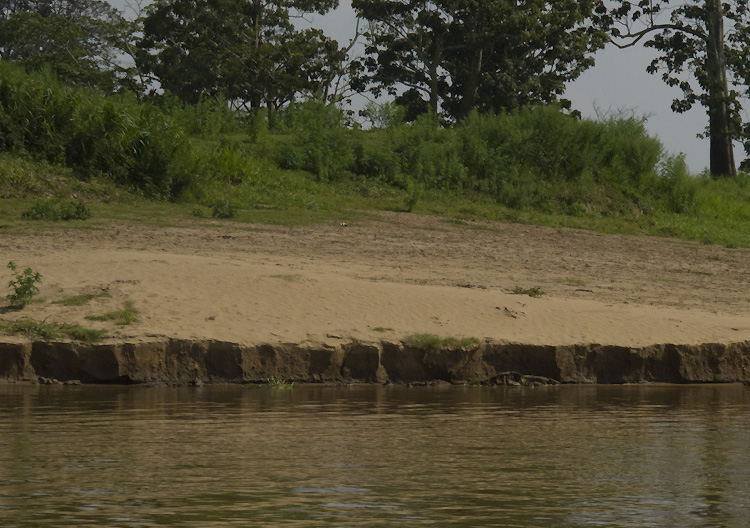Amazon Basin (sedimentary basin) on:
[Wikipedia]
[Google]
[Amazon]
 The Amazon Basin is a large
The Amazon Basin is a large
 The Amazon Basin is a large
The Amazon Basin is a large sedimentary basin
Sedimentary basins are region-scale depressions of the Earth's crust where subsidence has occurred and a thick sequence of sediments have accumulated to form a large three-dimensional body of sedimentary rock. They form when long-term subsidence ...
(620,000 square kilometres (240,000 sq mi)) located near the middle and lower course of the Amazon River, south the Guiana Shield
The Guiana Shield (french: Plateau des Guyanes, Bouclier guyanais; nl, Hoogland van Guyana, Guianaschild; pt, Planalto das Guianas, Escudo das Guianas; es, Escudo guayanés) is one of the three cratons of the South American Plate. It is a ...
and north of the Central Brazilian Shield
The Amazonian Craton is a geologic province located in South America. It occupies a large portion of the central, north and eastern part of the continent and represents one of Earth's largest cratonic regions. The Guiana Shield and Central Brazi ...
. The basin developed on a rift
In geology, a rift is a linear zone where the lithosphere is being pulled apart and is an example of extensional tectonics.
Typical rift features are a central linear downfaulted depression, called a graben, or more commonly a half-grabe ...
that originated about 550 million years ago during the Cambrian
The Cambrian Period ( ; sometimes symbolized Ꞓ) was the first geological period of the Paleozoic Era, and of the Phanerozoic Eon. The Cambrian lasted 53.4 million years from the end of the preceding Ediacaran Period 538.8 million years ag ...
.
Location
The Amazon Basin is located south of theGuiana Shield
The Guiana Shield (french: Plateau des Guyanes, Bouclier guyanais; nl, Hoogland van Guyana, Guianaschild; pt, Planalto das Guianas, Escudo das Guianas; es, Escudo guayanés) is one of the three cratons of the South American Plate. It is a ...
, north of the Central Brazilian Shield
The Amazonian Craton is a geologic province located in South America. It occupies a large portion of the central, north and eastern part of the continent and represents one of Earth's largest cratonic regions. The Guiana Shield and Central Brazi ...
, east of the Solimões Basin, and west of the Marajó
Marajó () is a large coastal island in the state of Pará, Brazil. It is the main and largest of the islands in the Marajó Archipelago. Marajó Island is separated from the mainland by Marajó Bay, Pará River, smaller rivers (especially M ...
Basin. It is bound to the west by the Púrus Arch and in the east by the Gurupá Arch. The basin has an elongated shape with a WSW-ENE orientation. Its long axis runs from the vicinity of Manaus to the area near the confluence of Xingu River
The Xingu River ( ; pt, Rio Xingu, ; Mẽbêngôkre: ''Byti'', ) is a river in north Brazil. It is a southeast tributary of the Amazon River and one of the largest clearwater rivers in the Amazon basin, accounting for about 5% of its water.
...
with the Amazon River.
Evolution of the Basin
The Amazon Basin was developed on arift
In geology, a rift is a linear zone where the lithosphere is being pulled apart and is an example of extensional tectonics.
Typical rift features are a central linear downfaulted depression, called a graben, or more commonly a half-grabe ...
, called the Sub-Amazonal Rift, that originated about 550 million years ago during continental collision of the West African Craton
The West African Craton (WAC) is one of the five cratons of the Precambrian basement rock of Africa that make up the African Plate, the others being the Kalahari craton, Congo craton, Saharan Metacraton and Tanzania Craton.Jessell M.W., Liégeoi ...
. Parts of the rift were reactivated during the opening of the South Atlantic
The Atlantic Ocean is the second-largest of the world's five oceans, with an area of about . It covers approximately 20% of Earth's surface and about 29% of its water surface area. It is known to separate the "Old World" of Africa, Europe an ...
. The Amazon Basin evolved through tectonic
Tectonics (; ) are the processes that control the structure and properties of the Earth's crust and its evolution through time. These include the processes of mountain building, the growth and behavior of the strong, old cores of continents ...
activity including continental collision
In geology, continental collision is a phenomenon of plate tectonics that occurs at convergent boundaries. Continental collision is a variation on the fundamental process of subduction, whereby the subduction zone is destroyed, mountains pr ...
, subduction
Subduction is a geological process in which the oceanic lithosphere is recycled into the Earth's mantle at convergent boundaries. Where the oceanic lithosphere of a tectonic plate converges with the less dense lithosphere of a second plate, ...
, and distortion of parts of the Andes Mountain Range
The Andes, Andes Mountains or Andean Mountains (; ) are the longest continental mountain range in the world, forming a continuous highland along the western edge of South America. The range is long, wide (widest between 18°S – 20°S l ...
.
Bauxite Deposits
The Amazon basin hosts large deposits of the aluminum-richsedimentary rock
Sedimentary rocks are types of rock that are formed by the accumulation or deposition of mineral or organic particles at Earth's surface, followed by cementation. Sedimentation is the collective name for processes that cause these particle ...
bauxite
Bauxite is a sedimentary rock with a relatively high aluminium content. It is the world's main source of aluminium and gallium. Bauxite consists mostly of the aluminium minerals gibbsite (Al(OH)3), boehmite (γ-AlO(OH)) and diaspore (α-AlO(O ...
. The discovery of bauxite deposits approximately 70 years ago made Brazil one of the most important countries in terms of both production and possession of bauxite deposits.
References
Geology of Brazil Sedimentary basins of Brazil Paleozoic rifts and grabens {{Geology-stub